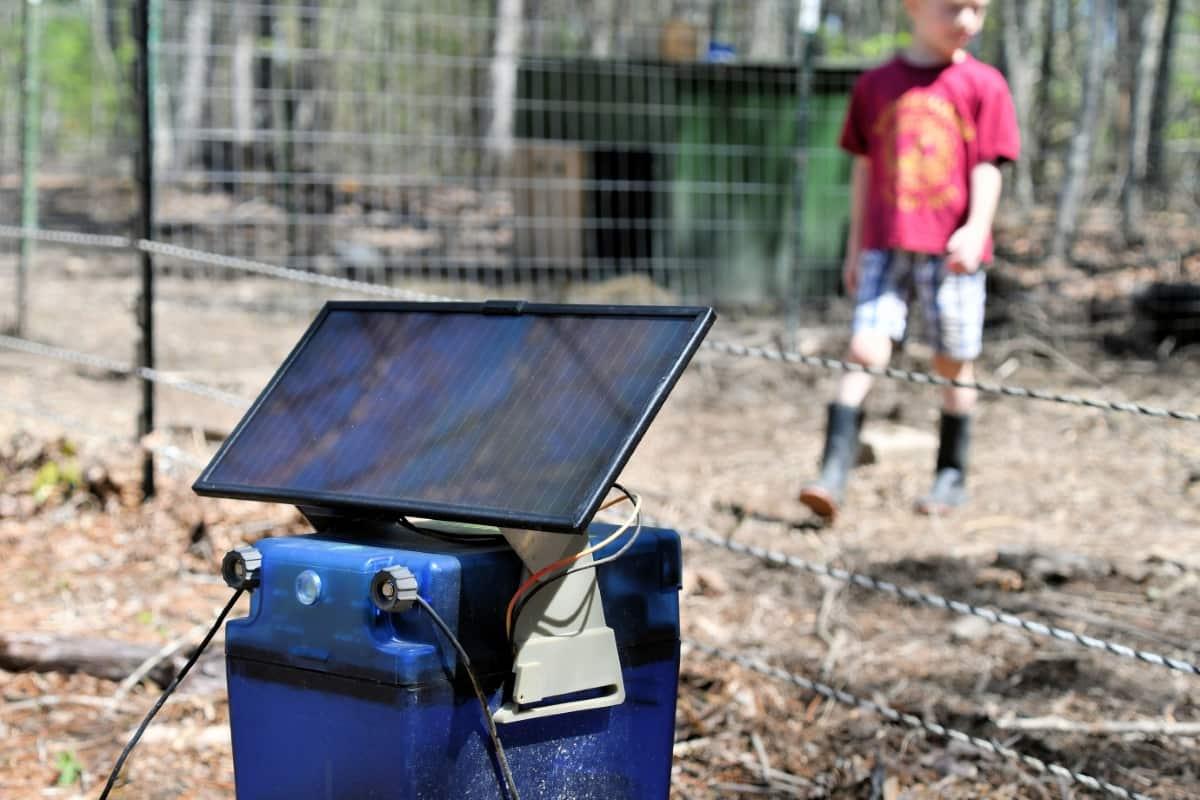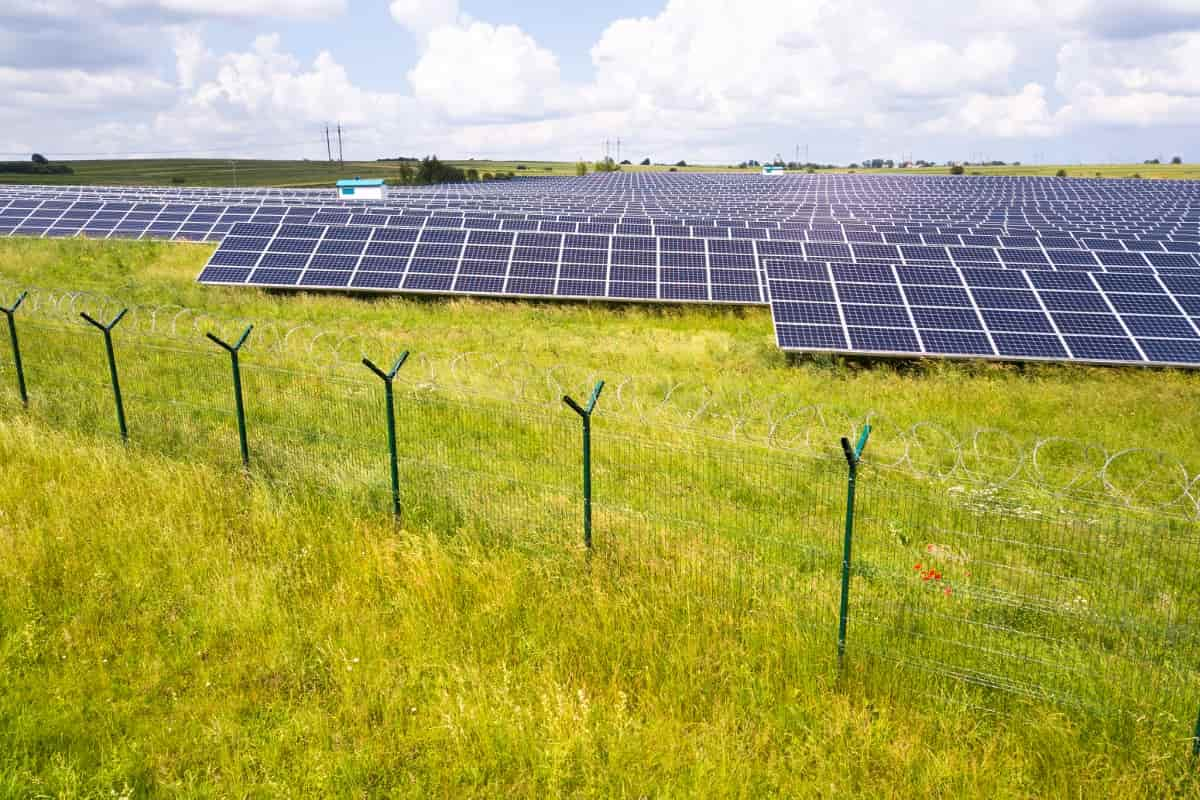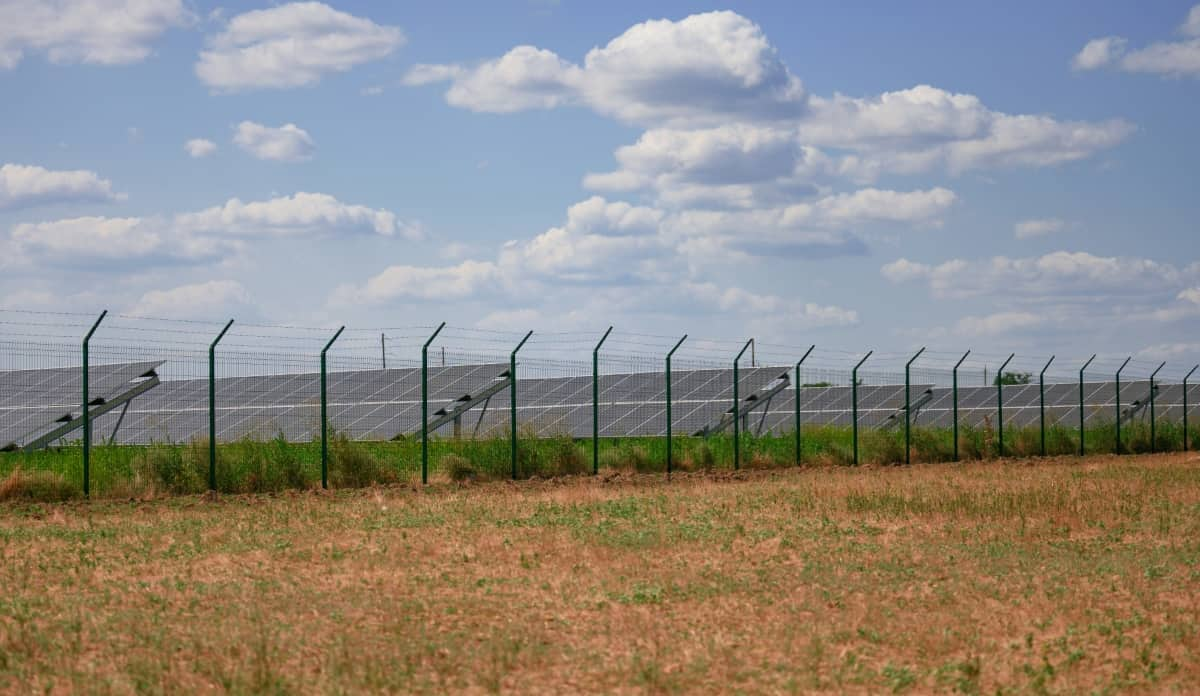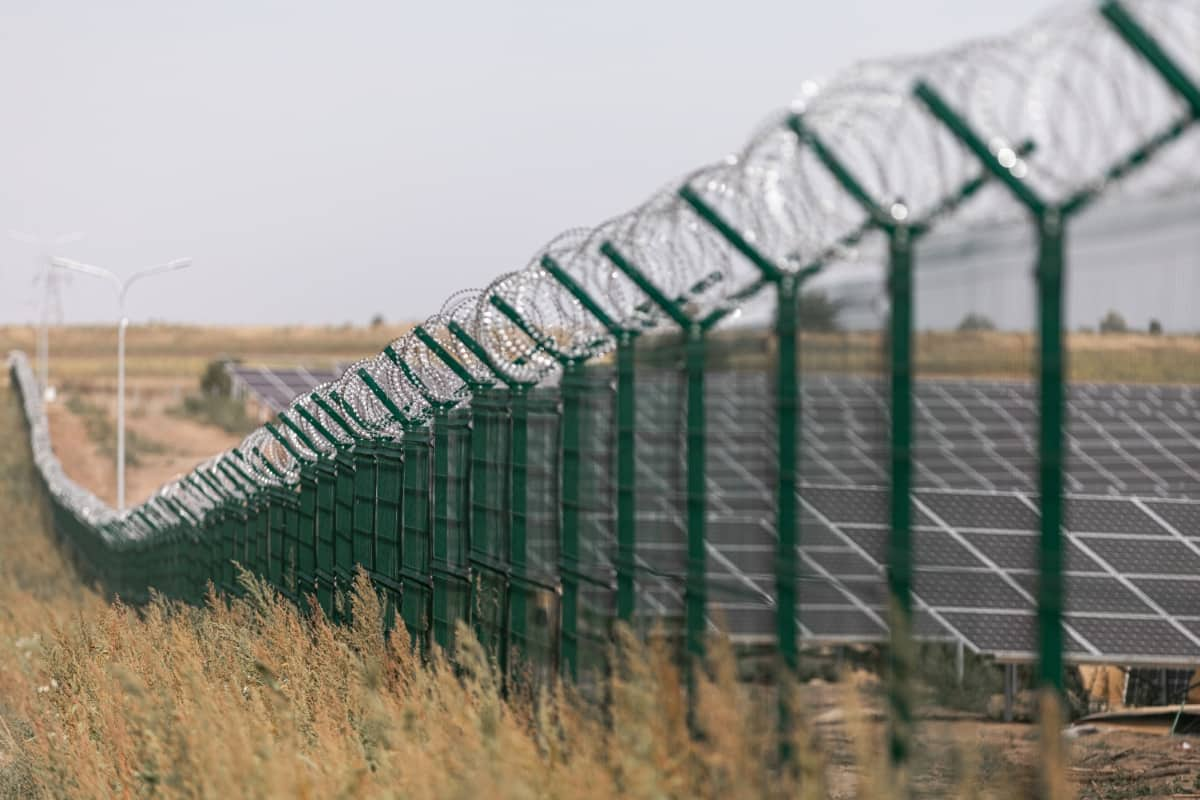Solar fencing plays a crucial role in protecting agricultural land from various threats and ensuring the safety of crops and livestock. With the increasing cases of theft and animal intrusions, it has become imperative for farmers to invest in effective security measures like solar fencing.

How to Install Solar Fencing for Agricultural Land
Benefits of Solar Fencing for Agricultural Land
The key benefit of solar fencing is its ability to protect without relying on grid electricity. Another advantage of solar fencing is its cost-effectiveness. Traditional security measures, such as barbed wire, can be expensive and require ongoing maintenance costs. In contrast, once installed, solar fencing requires minimal maintenance and operates at a significantly lower cost due to its reliance on renewable sources. Furthermore, solar fencing offers flexibility in installation options. It is environmentally friendly as it relies on renewable energy sources.
Assess the Suitability of Your Agricultural Land for Solar Fencing
Assessing the suitability of your agricultural land for solar fencing is a crucial step in ensuring its effectiveness and efficiency. Before diving into the installation process, it’s important to evaluate various factors that can influence the success of your solar fencing system. Consider the size and layout of your land. Solar fencing works best for medium to large-sized agricultural properties with clearly defined boundaries.
Take note of any natural obstacles, such as trees or hills, that could potentially obstruct sunlight from reaching the solar panels. Adequate sunlight exposure is essential for generating sufficient power to keep the fence energized. Consider local regulations and zoning restrictions regarding solar fencing installations.
Select the Right Type of Solar Fencing for Your Agricultural Land
It is crucial in ensuring its effectiveness and durability. With various options available, it’s important to choose a system that meets your specific needs. If you have a large expanse of farmland, you may need a more powerful solar fence energizer and additional wires to cover the entire perimeter. On the other hand, smaller plots may require a simpler setup with fewer components. Next, assess what kind of animals or pests you are trying to deter. Some solar fencing systems are better suited for harsh climates or areas prone to heavy rainfall or extreme temperatures.
Prepare the Ground for Solar Fencing Installation
Before you begin installing the fence, it’s essential to assess the terrain and make necessary preparations. Clear any vegetation or obstacles that may interfere with the installation process. A clean and level surface will provide a solid foundation for your solar fencing. Next, mark out the boundaries of your agricultural land where you want to install the solar fencing. Use stakes or flags to indicate where each fence post should be placed.
In case you missed it: How to Set Up Solar-Powered Hydroponic System: Benefits, Design, and Challenges

This will help ensure proper spacing between posts and allow for an even distribution of tension along the fence line. Once marked, dig holes at regular intervals along the boundary line for inserting fence posts. After digging, insert each post into its respective hole firmly while ensuring they are straight and aligned properly. You can use concrete or gravel to secure them in place if needed.
Install the Solar Panels and Batteries
To begin with, you need to determine the ideal location for placing solar panels. Look for an area that receives maximum sunlight throughout the day. It should be free from obstructions such as trees or buildings that could cast shadows on the panels. Next, securely mount the solar panels in their designated spot using brackets or frames. Make sure they are positioned at an angle that allows for optimal sun exposure.
Now comes the installation of batteries, which store energy produced by the solar panels during morning hours. Choose high-quality deep-cycle batteries that are specifically designed for off-grid applications like this one. Connect these batteries to your electric fence energizer using appropriate wiring and connectors.
Set Up the Electric Fence Energizer
This important component is responsible for delivering a safe yet powerful electrical charge to deter any potential intruders or animals from entering your land. To begin, locate a suitable spot near the battery where you can mount the energizer. Make sure it is protected from rain or direct sunlight to ensure its longevity.
Next, carefully connect the energizer to both the battery and solar panels using appropriate cables. Remember, safety should always be a priority when setting up an electric fence. Keep children and pets away from this area at all times and consider installing warning signs to alert others of its presence.
Install the Fence Posts and Wires
Begin by marking out the perimeter of your agricultural land where you want the fence to be installed. Next, dig holes at regular intervals along the marked perimeter to place your fence posts. Make sure these holes are deep enough to provide stability for the posts. Once your holes are dug, insert the fence posts securely into each hole, ensuring they are straight and level.
After securing the fence posts, it’s time to attach the wires. Start by running a wire around the top of each post at a height that is suitable for deterring animals from entering or exiting your land. Use additional wires spaced evenly between these top wires to create a secure barrier. This will ensure the appropriate functionality of your solar fencing system.
Connect the Solar Panels to the Energizer and Battery
To begin, locate the terminals on both the energizer and battery. These terminals are usually labeled as positive (+) and negative (-). Make sure to follow the manufacturer’s instructions for proper identification of these terminals. Next, connect one end of a suitable wire to the solar pane positive terminal. Then, connect the other end of this wire to the positive terminal of both the energizer and battery. Similarly, repeat this process with another wire but connect it to each component’s negative terminal instead.
By doing so, you create a complete circuit that enables power transfer between all three elements – solar panel, energizer, and battery. Take extra care during this step not to mix up or reverse any connections, as it may result in malfunction or damage to your equipment. It is always recommended to double-check your connections before proceeding further. Connecting your solar panels correctly ensures that they can charge up your battery effectively during daylight hours.
Test and Maintain Your Solar Fencing System
To start, periodically check the voltage output of the electric fence energizer using a voltmeter. This will confirm that the energizer is delivering an adequate charge to deter animals from crossing the fence. If the voltage reading is low, it may indicate a problem with the energizer or wiring that needs attention. Inspecting the fence wires is also important for maintenance.
In case you missed it: 9 Ways to Use Solar Energy for Your Garden: Managing Your Garden with Solar Power

Regularly cleaning and maintaining your solar panels will help maximize their efficiency in harnessing sunlight for power generation. Consider installing a backup battery if you live in an area prone to frequent power outages. This will ensure the continuous operation of your electric fence even during these circumstances.
Ensure Safety Measures for Solar Fencing on Agricultural Land
- Warning Signs: Clearly mark the fence perimeter with warning signs to alert people of the electrified fence. This will help prevent accidental contact and potential harm.
- Grounding: Ensure proper grounding of the electric fence system. This helps divert any excess electrical charge into the ground, reducing the risk of shock or damage to animals or humans.
- Regular Maintenance: Periodically inspect your solar fencing system for any damages or malfunctioning components, such as loose wires or faulty energizers. Promptly address these issues to maintain optimal performance and safety.
Frequently Asked Questions (FAQ) on Solar Fencing
Do I Need Direct Sunlight for My Solar Fence to Function Properly?
Although direct sunlight is optimal for charging batteries efficiently, modern-day advancements allow some flexibility in terms of exposure conditions. Solar fences can still operate reasonably well even with indirect sunlight or partial shade if designed with appropriate battery backup systems.
What Materials Do I Need for Installing Solar Fencing?
To install solar fencing, you will need sturdy posts made of metal or wood, insulated wires, insulators to attach wires to the posts without conducting electricity into them, a voltage regulator unit to control and monitor power flow, a battery box with rechargeable batteries, and a solar panel.
Which Fencing is Best for Agricultural Land?
Barbed wire has been a popular choice among farmers for decades, and for good reason. In addition to its durability, barbed wire also provides excellent security. Moreover, barbed wire fences are relatively easy to install compared to other options.
How long do Solar Fences Last?
With regular periodical maintenance & and checks, they last up to ten years.
In case you missed it: List of Vegetables that Can Be Grown in Coastal Areas

Conclusion
Solar fencing is highly versatile and can be customized according to your specific needs. You can select from different types of solar fences based on factors like animal size, terrain conditions, and required voltage levels. This flexibility allows you to make a secure boundary that suits your unique requirements.
- Ultimate Guide to Ossabaw Island Hog: Breeding, Raising, Diet, and Care
- Ultimate Guide to Juliana Pig: Raising Facts, Size, Diet, Care, and Lifespan
- Raising Lleyn Sheep: Disadvantages, Price, Uses, Characteristics, and Care
- Ultimate Guide to Meishan Pig: Breed Facts, Breeding, Raising, and Care
- Ultimate Guide to Teacup Pigs: Raising, Diet, Lifespan, Cost, and Care
- Guide to Raising Poll Dorset Sheep: Facts, Profile, Characteristics, Uses, and Care
- Ultimate Guide to Bighorn Sheep: Characteristics, Diet, Lifespan, Breeding, and Lifecycle
- Ultimate Guide to Raising Katahdin Sheep: Farming Facts, Breed Profile, Uses, and Care
- Ultimate Guide to Raising Oreo Cows: Belted Galloways Farming Facts, Profile, Uses, and Care